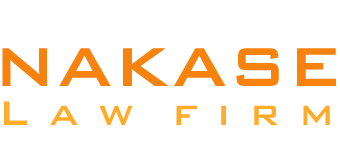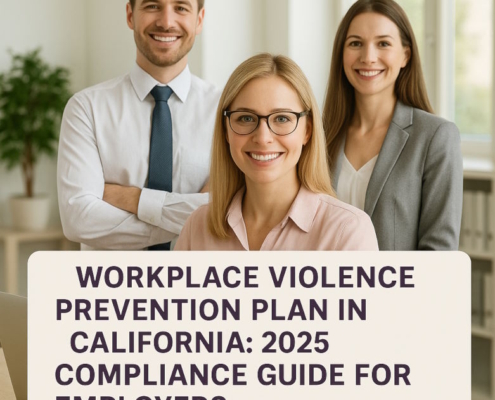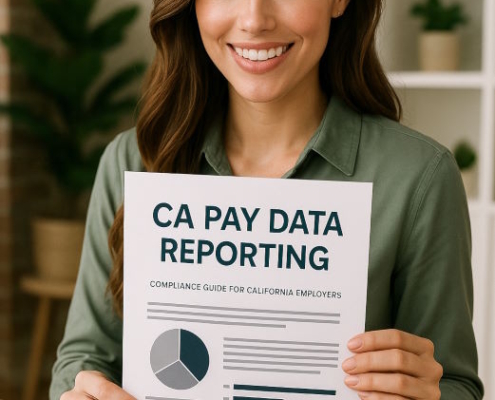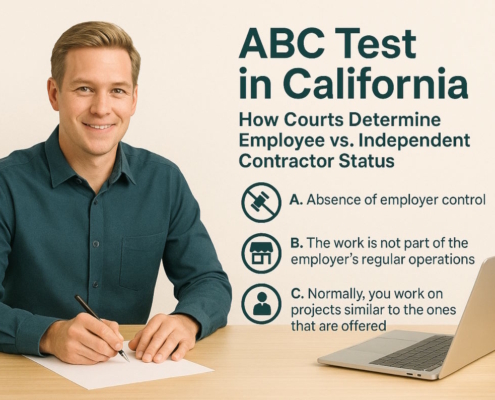What is HR compliance?
Maintaining HR compliance is essential to the legality of your company and the security of your workers. To reduce the legal risk to the organization, a specialized Human Resources Compliance team or an assigned HR employee must navigate a variety of federal and state rules and regulations. HR assists in preventing potential liabilities, fines, and controversies that could harm the company’s reputation by doing this.
Now let’s explore all the information you require to manage HR compliance.
The process of developing policies and procedures to guarantee that your company complies with current employment and labor laws and regulations is known as HR compliance. HR not only works to ensure that workplace regulations comply with state and federal laws, but they likewise enforce the policies to guarantee that every employee abides by them.
Your company needs to be in compliance with HR laws because all employers have legal obligations. Failure to comply may result in fines, penalties, or even legal action, all of which could be harmful to your company. Put differently, in order to safeguard their company, HR directors must give top priority to HR compliance.
Within HR, compliance takes many different forms. We’ll start with four:
Statutory compliance: This type of compliance entails following and putting into effect laws related to labor and the workplace. For instance, your business must abide by rules regarding anti-discrimination, age for employment requirements, and minimum pay, among other things.
Regulatory compliance: There are times when regulatory compliance and statutory compliance are the same thing. The main difference is that your business has to abide by the regulations set forth by a particular regulatory authority. These regulatory bodies are generally divided into three categories: government corporations, like the Centers for Disease Control and Prevention (CDC), executive agencies like the United States Environmental Protection Agency (EPA), and independent regulatory commissions like the Federal Trade Commission (FTC).
Contractual compliance: This is just what it sounds like it is: adhering to the rules and agreements that your company is required to follow. This could be an agreement between your business and its associates or between you and your staff.
Compliance with union law: Some businesses may cooperate with union members, such as The Screen Actors Guild, which represents more than 100,000 actors and technicians. In this situation, your business needs to be aware of and follow the guidelines established by these unions.
Examples of HR compliance difficulties
It is crucial for businesses of all sizes to understand that they have to abide by certain regulations, including labor laws. If not, you could face penalties, legal troubles, and negative reputation. Let’s explore the difficulties that HR professionals encounter with compliance in more detail.
- Laws related to wages and hours
Numerous laws in the US safeguard employees’ rights to compensation and labor hours. There are laws at the national, state, and municipal levels. They also establish quotas for the number of hours an employee may work in a given day, overtime compensation, and weekend pay.
As of July 2022, the minimum wage in Oregon is $13.50 per hour, whereas the federal minimum wage in the United States is $7.25. Portland, the state’s most populated city, pays $14.75 per hour. You need to be aware of and abide by these laws, particularly if your company employs remote workers or operates in numerous states and localities.
- The Family and Medical Leave Act (FMLA)
This act allows qualified US workers to take unpaid leave with job protection for family or medical needs. In other words, in specific family or medical situations, your staff member has permission to take unpaid vacation without fear of losing their job. Examples include the birth of a child, tending to a parent, kid, or spouse who is ill and unable to work, or the employee’s own illness that prevents them from working.
- Occupational safety
The Occupational Safety and Health Administration (OSHA) views workplace safety as a matter of regulatory compliance. You’ll need to adhere to distinct industry standards based on the type of business the company conducts.
For instance, construction workers are frequently in hazardous situations where they run the risk of being struck by large machinery, silica dust, asbestos, or other projectiles. On the other hand, the risks faced by healthcare workers are very different. These risks include exposure to infections and viruses, potential drug and chemical poisoning, radioactive substances, and X-ray threats.
You can search the North American Industry Classification System (NAICS) to learn more about the workplace safety regulations that apply to your organization.
- Union legislation
As previously stated, when interacting with union members, companies need to be cognizant of union legislation. The Association of Flight Attendants – CWA (AFA-CWA) is another powerful union. By organizing, negotiating, and taking political action, the group supports its members in obtaining fair payment, stable employment, seniority protections, and improved quality of life while serving as the leading voice for a safe, healthy, and safe aircraft interior for travelers and flight attendants alike.
The union’s regulations related to compensation, working hours, and safety, among other things, must be followed by airline businesses.
- Immigration regulations
Immigration laws must be followed by both businesses and higher education institutions when recruiting staff or admitting international students. The Immigration and Nationality Act (INA) is the statute that governs US immigration policy. This statute permits the US to grant a set number of permanent visas in different visa categories each year.
The main agency in charge of upholding immigration rules in the United States is the Department of Homeland Security (DHS), with support from numerous other departments.
- Classification of employees
Many organizations opened their positions to many different kinds of workers, including part-time employees, independent contractors, and remote or hybrid employees, in order to cope with the present talent market. In this situation, your business has to know which workers qualify for specific benefits and how much their pay should be according to their location and number of hours worked.
If you are hiring employees in more than one location, don’t forget to verify which local and state employment regulations are relevant.
- Data safety
This kind of compliance relates to how businesses and governmental organizations safeguard, maintain the privacy of, and prevent breaches in data. In general, this has to do with customer data, but it also includes financial information and employee data.
One such is the California Consumer Privacy Act (CCPA), which is applicable only to businesses with $25 million or more in annual revenue. Residents of California are entitled by law to know what personal data a business has stored on them and what information has been disclosed to outside parties.
Why does HR compliance matter?
- Preventing penalties and legal issues
Your company may be the target of an external audit at any time. An external compliance audit’s objective is to examine how well your company complies with legal requirements. Following the various laws and rules that are relevant to your company will help you stay out of trouble with the law and save money for your company.
- Preserving company reputation
Non-compliance cases, including employee misclassification or inadequate workplace safety, are frequently covered by the media and can harm your firm’s and your employer’s reputation. That also affects customer trust, hiring, and retention strategies.
- Creating a fantastic workplace
Ensuring that your staff members feel safe and can trust you as a reliable employer starts with HR compliance.
How can HR compliance be guaranteed?
By adhering to HR compliance best practices, you can ensure that your company is prepared for long-term success.
- Keep a record of the requirements for compliance that you need to follow
The laws and ordinances that apply to you will vary depending on a number of factors, including your industry, region, and scale of operation.
Create a list of the applicable laws and compliance requirements that is simple to access. Remember the several categories of compliance concerns that we have discussed previously, including rules pertaining to worker safety and wages.
You can use compliance software to monitor regulatory requirements in order to assist you with this. Donesafe and Libryo are a couple such examples.
- Separate compliance responsibilities inside the HR department
Members of your HR team need to be well aware of their responsibility for maintaining HR compliance. Consider the following questions as you plan your time: Is there a single individual designated to oversee compliance, or is this a shared duty among several team members? If yes, does this individual possess the requisite training and experience? How can they build them if not?
You may even choose to enlist the services of a consulting firm or appoint a dedicated HR compliance officer, manager, or team in larger companies, depending on your needs. It is also conceivable that you will require legal assistance. Therefore, in order to promote compliance in your firm, you may need to form a cross-functional team.
- Remain informed of any changes to the law
Keep an eye out for changes to the laws and rules that affect your company. Usually, the changes take place at the start of the year.
A great place to start is by subscribing to HR Dive’s Compliance newsletter or to Corporate Compliance Insights’ HR section. HR professionals in general will find this useful, but individuals in charge of compliance at their company will benefit most from it.
- Conduct routine audits of your HR policies.
Check the compliance of your HR policies, such as your leave policy, non-discrimination policy, and salary policy, by conducting HR audits on a regular basis. Allow time for policy updates.
Additionally, you can use HR compliance training to educate your staff. Examples include training on affirmative action plans, interview compliance for hiring managers and new interviewers, and the Fair Labor Standards Act (FLSA).
- Use consistency when implementing your rules
When it comes to applying FMLA, implementing your disciplinary action policy, performing HR investigations, and other procedures, you must be consistent. If not, it could create chances for noncompliance and legal problems.
Consistency can be attained through documenting process stages, maintaining accurate records, and training management on these procedures.
- Make use of HR technologies
First things first, see if your HR technology complies with regulations, such as GDPR if you operate in Europe, or privacy laws in general. To further facilitate assuring compliance, a lot of HR products include compliance features. These platforms include IntelliHR, SAI 360, and BerniePortal Compliance.
- Make a checklist for HR compliance
The checklist for HR compliance makes sure you don’t overlook anything. For organizational compliance, you can make a more general checklist as well as a compliance checklist specifically for employing new staff members. Here is a general checklist that you should modify to fit your business:
A. Hiring and conducting interviews
Verify that the laws pertaining to hiring and interviewing are followed. This calls for familiarity with the provisions of the Fair Employment and Housing Act and the Americans with Disabilities Act. Keep in mind that you must abide by local and state regulations.
For instance, New York City now mandates that you include the wage in the job posting. Additionally, you are not permitted to pose biased interview questions with particular queries. In order to avoid prejudice and legal problems, make sure that your staff is trained on this.
B. The recruiting process
Make sure you have a checklist for examining offer letters, contracts, and new hire onboarding paperwork when you bring on a new employee. Additionally, be sure that the resources you use to store employee files and data abide by the applicable data protection rules in your area.
C. Business guidelines
Laws are subject to sudden change, therefore your team must stay informed. Your company’s pay and benefits policies for employees, parental leave, health insurance benefits, family and medical leave, disability benefits, COBRA, and unemployment benefits should all be on your company policy checklist.
D. Handbook for employees
Both the employer and the employee can benefit from having an employee handbook. You can offer direction and details about the company’s rules, practices, and advantages in the handbook. Sections on Equal Employment Opportunity rules, workplace safety, code of conduct, working hours, workplace disciplinary action, and non-discrimination policies are just a few that you should include in your compliance document. Your employee handbook has to be reviewed and updated frequently.
E. Management education
When it comes to compliance, one of your most valuable resources is your management. Ensure that management receives Human Resources compliance training with an emphasis on the following topics:
- Performance evaluations
- Handling challenging workers
- Employee termination
- Diversity education, anti-discrimination legislation, and anti-harassment programs
Without getting too technical, you should also make Affirmative Action, Equal Employment Opportunity Commission, Veterans Checklist, and I-9 documents particular to your team in the US.
In sum
HR compliance is more than simply a formality. Rather, it assists you in upholding your excellent company image and creating an environment that is safe, equitable, and transparent for your employees. Making an HR compliance checklist can also aid in streamlining the procedure and shielding the business from legal action.































